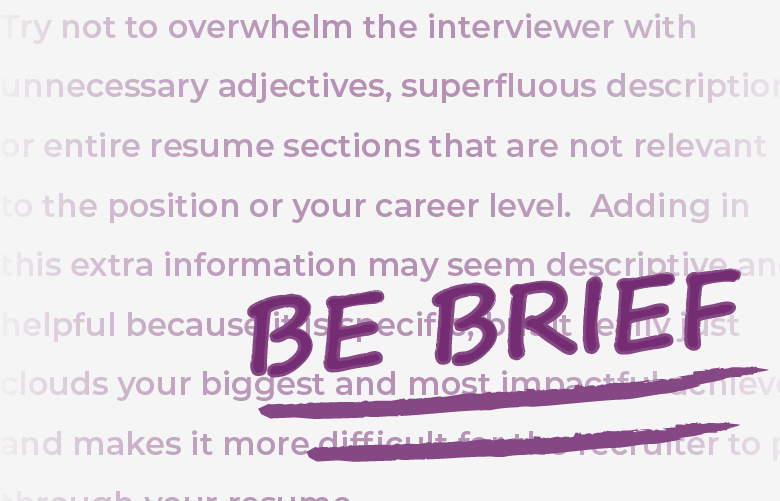The FANG Product Manager Resume Guide
Learn what companies like Google, Facebook, and Uber look for in a resume and get through to the phone screen.
Resumes are the first (and often last) chance you have to make an impression. Recruiters and hiring managers spend an average of 6 seconds on each resume they view, so you better make it count.
To stand out to employers, you need to understand what work experience is relevant, and what recruiters are really looking for-- beyond what's highlighted in the job description.
At Candor, we’ve helped over 400 PMs create and polish their resumes. There are some tips every PM should know, from how to properly talk about metrics to which keywords actually make a difference. But above all else, a product management resume needs to highlight these three abilities:
- Articulating what a winning product looks like.
- Rallying the team to build it.
- Iterating on it until they get it right.
Your resume should be focused on selling your ability to deliver flawlessly on these objectives. To convey this in the best way, you should focus on clarity, brevity, context and layout. Here's how to do it.
Clarity: The Elevator Pitch

Think elevator pitch, not life history. Your resume, from your header to your experience section, should clearly address the question: “why are you the right fit?”
Many job seekers struggle to strike the balance between clarity and expressing their qualifications. However, if your job search includes top companies, you need to strike this balance VERY well-- communication skills are a top priority.
So how do you do it?
1. Lay the foundation
Before you even write your resume, do this. Write a one sentence no-thrills description of what you did at your last three jobs. You need to have a clear, impressive way to talk about your work experience. We have examples of how successful product managers do that in our course.
2. Draft your bullet points
Draft your bullet points. Think of three to five examples in each past job that prove you were exceptional at identifying a win, rallying the team, or iterating/optimizing to get the product right.
Examples that don’t fall into our key areas should not make it into the resume at all. Resume writing is all about prioritizing which part of your professional experience will stand out to prospective employers. Don't be tempted to be exhaustive. While you might want to mention skills like "defining a product roadmap" or "market research," these are core expectations of every PM and not resume builder material
3. Do a sanity check
Always sanity check. Have a friend or colleague read what you have so far, before it becomes your official resume. Ask them to answer these two questions:
- Can you describe what I do and what makes me good at it?
- What do you feel is my greatest accomplishment, after reading this?
If the answer is no (and remember, long pauses and an awkward face count as “no”), go back and rewrite it. If someone who knows you is not convinced, forget ever getting through to a recruiter or hiring manager.
Brevity: The Best Resume Format

In a desire to be understood, PM candidates often want to communicate contextual details. What started as a quick description of past experience turns to a sea of bullet points, each a paragraph long. What is worse, adjectives start creeping in and before you know it, your resume is a hybrid between a CV and a cover letter.
If you want a top product manager job, this isn't going to fly. You need to cut down your resume by highlighting the right skills and eliminating unnecessary fluff. Here's how to do it.
Keep it to one page
If you want to get a human to read your resume, be clever with your formatting and keep it to one page (you’ve got one page, one opportunity, to seize everything you ever wanted…)
Multi-page resumes are a no-go. Yes, even if you’re the most accomplished PM ever. Yes, even if your friend told you she applied with a 2 page resume and it was fine. DO NOT DO IT. This is not cover letter. Hiring managers and recruiters want brevity.
Cut nonessential sections
It is generally a (very) bad idea to include a “professional summary” or “objectives” section at the top of your resume.
There is one exception: folks with nontraditional backgrounds (engineer to PM, for example) get a free pass. If this describes you, use one sentence to help orient the recruiter if your experience is not clear cut.
Here are a few more sections to cut from your resume. Trust me on these: hiring managers often see them as a red flag.
🚩List of conferences or hackathons you attended
🚩Competitions you participated in, but didn’t win
🚩Side projects ( unless you’re a student applying for APM type program)
🚩Volunteer activities taking up a significant portion of the resume
Highlight the right skills

Keep it high-impact
Avoid banal bullet points like "participated in product development", "dictated the roadmap" or "tested user experience". Concentrate on highlighting areas of real impact only. Focus on things that show you have product vision and scope, such as launching a new product.
Remember: this is not an inventory of everything you know how to do. The only other skills you should highlight are ones that make you competitive in the marketplace or give you a unique advantage.
Prioritize listing hard skills
Your skills section should show concrete, marketable skills that make you stand out. Here are a few tips for choosing the right ones:
- Only include them if you’re proficient. For example, only list list python if you're prepared to talk about the libraries you use. Don't list it if you've only dabbled in computer science
- Don't put skills that everyone has. If you list "Google Docs" or "Microsoft Excel," for example, the recruiter is probably going to pass
- Put in methodologies you're familiar with, like Agile and Scrum, only if the job calls for it
- Applications are very helpful. JIRA/Tableau type tools are only helpful to add if you’re coming from a small startup, little known company, or untraditional background.
Soft skills have no place here
It’s usually a red flag if you list things like “ stakeholder engagement”, "led cross-functional teams", “requirement analysis”, etc. separately. These should be woven into your job description or bullet points.
It’s often misunderstood that you have to list these for ATS algorithms to catch them — please be mindful that resumes are eventually read by a human and also ATS mainly screens for technical keywords. Hiring managers see keyword bingo as a red flag against the maturity level of the candidate.
Context: Optimizing for the Role You Want

Now that you’ve articulated your work experience, accomplishments, and skills in a clear, brief format, it’s time to contextualize them to the job you want.
While you do this, don't lose sight of the things every PM needs to focus on. Every point needs to show that you can:
- Articulate what a winning product looks like
- Rally the team to build it
- Iterate on it until they get it right
There are three steps to help you customize your resume to each role. At the end, you'll have a few versions of your resume-- usually one per company, depending on the products you want to work on.
Step one: Make a short list of PM jobs you want. For each company, you're going to do some research. Learn as much as you can about the culture, the team, and the product.
Step two: Figure out where there's a mutual fit, or where your skills and the company's needs overlap. How? Write a short description of why you want to work for that company. Then, connect it to your resume. Look at your experience and ask “why would they want me to work there?”. Practice re-writing your bullet points to fit that answer.
Step three: Customize your resume in subtle ways. Identify 3–5 keywords from each job description you want to incorporate into your resume, without being obvious.
Layout: The Final Piece!

We’re now ready to format your resume! I know, it took a lot to get here, but keep in mind being a Product Manager for a top company is highly competitive and highly compensated. Your career trajectory (and your wallet) will benefit from your effort!
If you've done the other steps properly, the layout will kind of fall into place. There are two more components to keep in mind:
- High level formatting
- Invest in a high quality font
A note on cover letters: Nowadays a cover letter is not required by recruiters or hiring managers - unless you're applying for a startup. Having a strong bio on your LinkedIn is usually sufficient.
Need Help?
If you have questions or need help writing or reviewing your Product Manager resume or you want some resume templates — sign up for our course to get started.
Already interviewing? Ask us about FREE resources for top tech companies like Google, Facebook, AirBnB, Uber, etc.
The information provided herein is for general informational purposes only and is not intended to provide tax, legal, or investment advice and should not be construed as an offer to sell, a solicitation of an offer to buy, or a recommendation of any security by Candor, its employees and affiliates, or any third-party. Any expressions of opinion or assumptions are for illustrative purposes only and are subject to change without notice. Past performance is not a guarantee of future results and the opinions presented herein should not be viewed as an indicator of future performance. Investing in securities involves risk. Loss of principal is possible.
Third-party data has been obtained from sources we believe to be reliable; however, its accuracy, completeness, or reliability cannot be guaranteed. Candor does not receive compensation to promote or discuss any particular Company; however, Candor, its employees and affiliates, and/or its clients may hold positions in securities of the Companies discussed.
